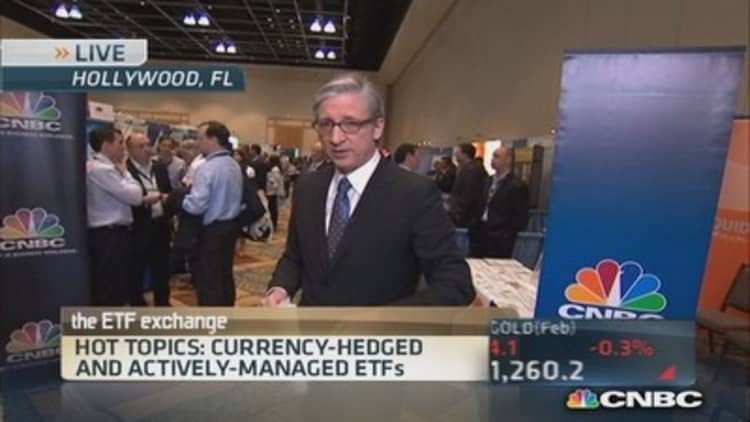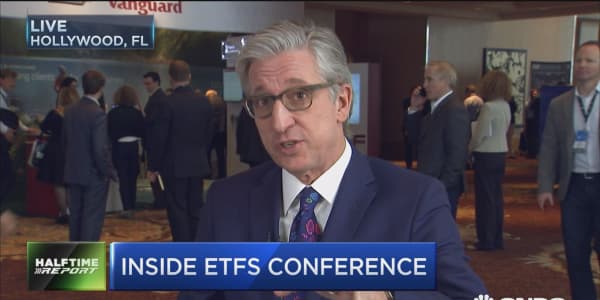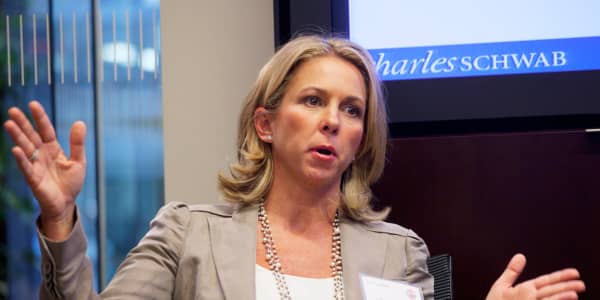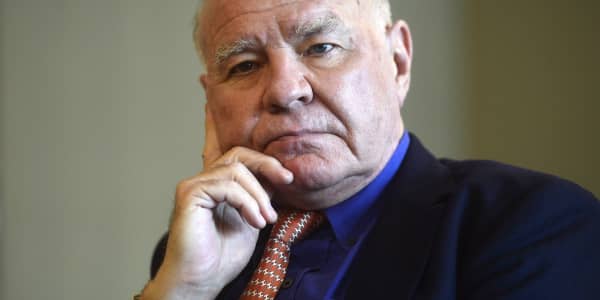The mutual fund industry takes criticism for an excessive number of portfolios—with more than 7,500 U.S. open-end funds in existence, detractors say it's more marketing behemoth at work than investing necessity. Now that exchange traded funds (ETFs) are rivaling traditional funds in asset flows, it may also match traditional funds' biggest problem of all: bloat.
The ETF industry's assets are still well short of traditional funds—even nearing $2 trillion, that's nowhere near mutual funds' $17 trillion in assets. But the more important figure is annual asset flows—and there, ETFs are not only giving funds a run for their money but in some recent years besting the fund competition. In 2008 and 2011, ETF inflows were higher than mutual fund flows, and for the past two years the race has been close to a dead heat, according to Lipper data, with traditional funds barely hanging on to their edge.
Is the biggest wave of ETF industry consolidation already a thing of the past—there's been a fairly steady state of folded ETFs in recent years—or is it just about to begin?
Be wary of fund closures
There's a good reason why investors, and not just ETF executives, should pay attention to the issue of fund closures. The amount of assets in a fund, the trading volume and whether or not the fund is part of an integrated family of funds could lower an ETF's chance of being closed, said Jim Wiandt, CEO of ETF.com.
"You don't want to be in a fund that closes," he said. "You will get your money back, but you will take a tax hit, and if you are an advisor, your clients will ask you why the fund you invested in closed."
(Read more: Emerging markets ETFs to avoid)
Currently, there are more than 1,500 ETFs, including more than 157 new ETFs launched last year, according to Morningstar, and there are hundreds of new ETFs in registration with the Securities and Exchange Commission. But the state of the market is different today than it was in the ETF industry's early years, when it was still novel to launch commodities, leveraged, inverse portfolios.
Only about 10 percent of 2013 launches gathered more than $100 million in assets and only 20 percent more than $50 million, according to a recent Credit Suisse report. "New providers continued to struggle for the most part," Credit Suisse noted. In fact, the only providers in the past four years to have accumulated more than $1 billion in assets are Northern Trust (their second attempt at ETFs, incidentally) and VelocityShares.
Launches and closures in ETF industry
| Closures | Launches | |
|---|---|---|
| 2009 | 56 | 138 |
| 2010 | 49 | 225 |
| 2011 | 30 | 307 |
| 2012 | 94 | 169 |
| 2013 | 64 | 157 |
Source: Source: Bloomberg, L.P. and Invesco PowerShares, as of Dec. 31, 2013
One good thing about the previous years' ETF failures: "Today it's tougher to launch something that immediately takes off into the market," Wiandt said. In 2013, 158 new exchange traded fund products were launched, the least since 2009 and 20 less than 2012, according to Credit Suisse data.
Over the past five years, 293 ETFs have gone bust—94 closed their shutters in 2012 and 64 in 2013, according to data provided by Invesco PowerShares and Bloomberg. The mutual fund industry experienced 341 fund closures in 2012 and 269 in 2013, according to Morningstar. "ETFs tend to be much more granularly diverse than mutual funds, so there is a lot less overlap," Wiandt said. Still, those 64 ETF closures last year were the second-most ever.
(Read more: 3 big risks, 3 big opportunities in ETFs)
The recent spate of ETF closures does seem to follow a few patterns. One is the ETF that is launched into a space where there are already 40 ETFs, and it simply is not different enough to be distinguished from the rest. There are also some ETF sponsors selling a strategic story that is too complex for the market. "There are sometimes unique products that just don't get traction and therefore close down," Wiandt said.
Products like the PowerShares Global Nuclear ETF and the Guggenheim Airline ETF just didn't have enough widespread interest, according to a recent Credit Suisse report on the ETF market.
It's Darwin's natural selection—informally often referred to as survival of the fittest—at work. But niche ETFs that serve an unmet investor needs are being marketed and sold. "WisdomTree's Japan Hedged Equity Fund (DXJ) became huge, despite telling a slightly complex story, because it met a need in the market," Wiandt said.
"It's hard to break through the cultural and historical biases, but we need to do it with advisors and customers," said Jonathan Steinberg, CEO of WisdomTree.
Gauging an ETF's chance of success
One way to gauge if a new, niche ETF may have a good chance of success is if it's an example of an institutional strategy becoming available to retail investors. "The best example of this right now is the big move toward so-called 'smart beta' strategies, which are being widely implemented by large institutions and increasingly being mimicked in ETFs, which make tilts in the market based on factor weighting," Wiandt said.
Institutions are also playing a more prominent role in another way that helps ensure the success of a new launch: Banks once offered seed capital for any and all ETF ideas, but now the most successful new ETFs are being launched with big commitments from institutional investors.
(Read more: How ETFs can crush mutual funds once and for all)
Barclays Capital had the most successful new-products launches last year, with two exchange traded notes—FIGY and FEEU, both close to $1 billion in assets. Regulatory filings revealed that Fisher Investments held most of the shares in the ETN, Credit Suisse said. Likewise, BlackRock had interest from Arizona's biggest pension plan in the issuance of several factor-based funds, including the iShares MSCI USA Quality Factor ETF (QUAL), the iShares MSCI USA Momentum Factor ETF (MTUM), the iShares MSCI USA Value Factor ETF (VLUE), and iShares MSCI USA Size Factor ETF (SIZE)—all of which have more than $100 million in assets, according to Credit Suisse data.

"We are still in the early innings of the game," said Michael Sapir, CEO of exchange traded fund company ProShares.
Maybe so, but in one very important way, the ETF industry already resembles the state of status quo in the traditional fund space: a market dominated by a few huge players. In traditional funds, Vanguard, Fidelity, American Funds, Franklin Templeton Investments and T. Rowe Price have long dominated the marketing game, and in ETFs it is now Vanguard, BlackRock's iShares and State Street Global Advisors' SPDRs. The market dominance of the "Big 3" in ETFs actually declined in 2013—as the decline of gold hit the SPDR Gold hard and the bailing on bonds hit BlackRock—but it hasn't changed the fact that it's getting harder and harder to launch a new ETF that finds success, and that can cost investors.
"The top three players out of 55 ETF companies still have 80 percent," said Kim Arthur, CEO of Main Management. "That's pretty typical of a mature market."
Dan Draper, managing director, global ETFs at Invesco PowerShares, said that ETFs still have a long way to go, representing 13 percent of the entire fund industry. And with an asset growth rate of 15 percent to 20 percent annually, it's "all the media attention" ETFs receive when there is a closure, causing those closures to stand out.
Kim doesn't expect ETF product development gurus to slow down too much: "Even if we're at 1,300 ETFs, there's no reason why, if there are more mutual funds than single stocks, we can't dream up another 1,000 ETFs."
—By Leslie Kramer, Special to CNBC.com




